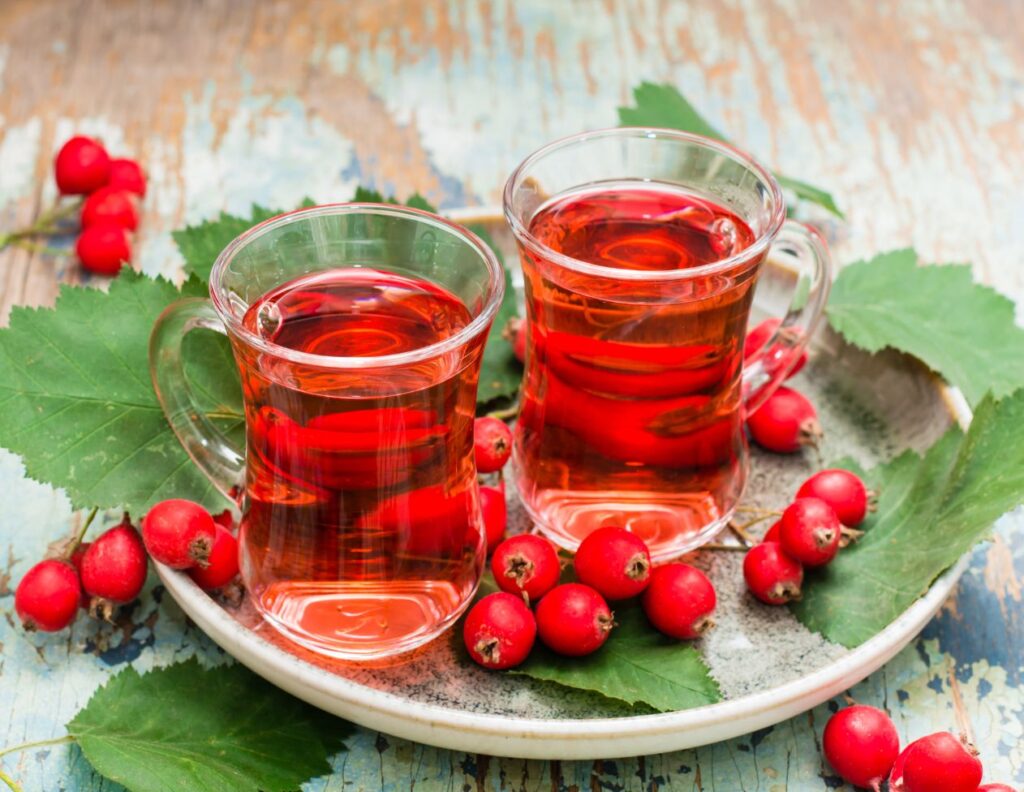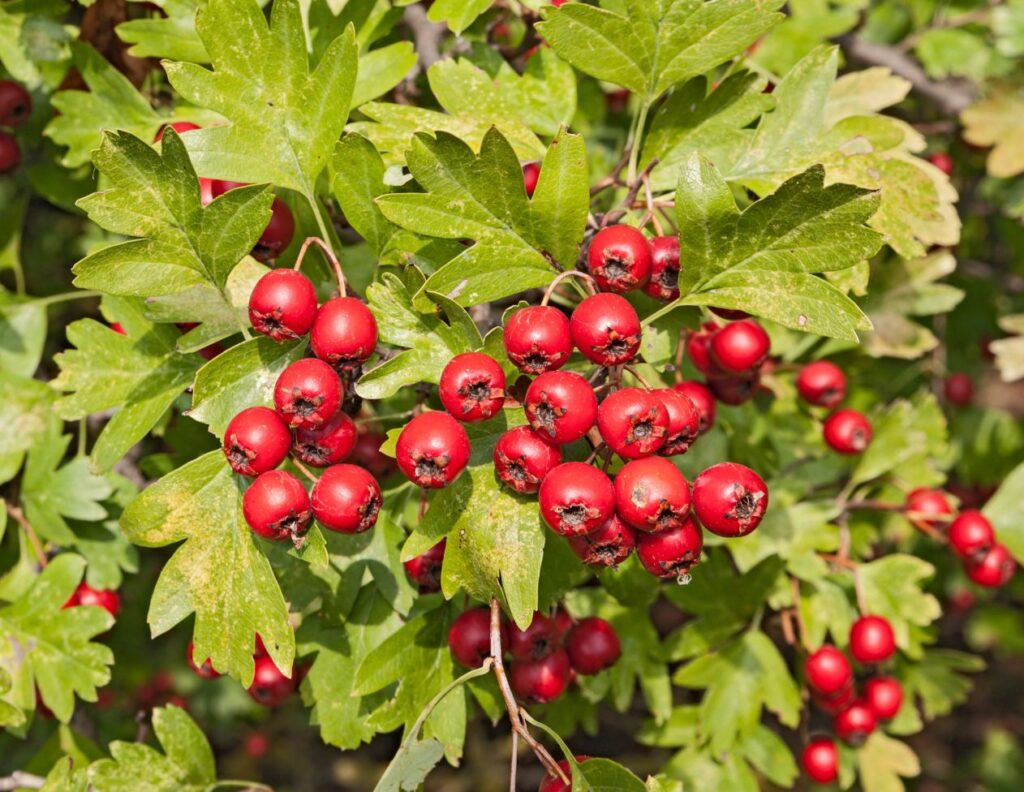Want to learn how to make hawthorn berries tea for high cholesterol, joint pain, and anxiety? Continue reading and find out how.
Hawthorn berries tea is one of the most underrated natural medicines in the fall season, given its different healing properties. First, it is a wonderful tea for the heart, as well as high cholesterol and joint pain, but is especially good for anxiety and stress. Before we show you how to make hawthorn berries tea and how to use it at home, let’s see how to harvest hawthorn berries, as it’s almost their season.

In This Article You Will Find:
How to Harvest Hawthorn Berries
The harvesting time for hawthorn berries (Crataegus monogyna) is September-October, before the first frost. The ripe berries have an intense red color (not pink or dark red) and are harvested without the stems, only the berries. Harvest them in canvas or paper bags. Dry the berries in shaded places, away from moisture, in a very thin layer (ideally the berries should not touch each other). The drying process is quite long, taking about 1-3 weeks, and it is done when the pulp of the berries is completely dehydrated and slightly brittle, breaking easily when cutting the berries with a knife.
From one kilogram of freshly picked fruits, after drying, approximately 300 grams of dehydrated hawthorn fruits result.
How to Make Hawthorn Berries Tea
Soak 3-6 tablespoons of hawthorn powder in a cup of water for 8-10 hours, then strain. Set the cold maceration aside, and simmer the used powder in another cup of hot water for two minutes. Allow to cool down, then strain, and finally, mix the two extracts. This will make you approximately half a liter (2 cups) of combined hawthorn berries infusion, which can be drunk throughout the day. Ideally during the preparation of the two extracts, do not use metal pots and sieves, as the metal will catalyze the oxidation of vitamins and flavonoids in the berries.
A simpler way to make hawthorn berries tea is the following.
Pour a cup of boiling water over 2 teaspoons of dried berries and steep for 10-15 minutes. Drink 2-3 cups a day in small sips. As hawthorn fruits are sour-bitter you can add a teaspoon of raw honey to sweeten the tea. This tea is highly recommended for premenopause symptoms including hot flashes, and is also recommended for children who have difficulty concentrating and elderly people who tire easily.
Health Uses of Hawthorn Berries Tea
1. High Cholesterol
Flavonoids are the natural pigments that make hawthorn berries red, and they also have a strong antioxidant effect, improving the metabolism of fats and preventing their deposition in the arteries. Animal studies and clinical observations have confirmed these beneficial effects of hawthorn berries on cholesterol. In this case, drinking 4 cups of hawthorn berries tea (the combined infusion) a day for 3-4 weeks is a safe remedy.
2. Degenerative Rheumatism & Joint Pain
Drinking 4 cups of hawthorn berries tea (the combined infusion) a day for 3-4 weeks is a natural remedy for degenerative rheumatism and the pain associated with it. The reason is that the red hawthorn berries have a powerful antioxidant and rejuvenating action, which stops the degenerative processes of the joints. Moreover, hawthorn has anti-inflammatory and slightly pain-relieving effects. In case of rheumatism that is cold-sensitive, combine equal amounts of hawthorn berries and rose hips when making the combined tea.
3. Neuroses, Anxiety & Panic Attacks
To enjoy its calming effects, sip 3 cups of hawthorn berries tea a day (the combined infusion). As a rule, the tea is administered on an empty stomach, 15 minutes before the main meals. It has a calming effect and stabilizes emotions, being especially recommended for patients who also suffer from cardiovascular conditions or symptoms.

Hawthorn Berries Side Effects
In very rare cases, hawthorn can have so-called paradoxical effects, namely cardiac arrhythmias and indisposition (headaches, nausea, etc.). For this reason, hawthorn remedies should be administered in small amounts (100-200 milligrams of extract per day), in the first 2-3 days of treatment, increasing the dose gradually, if the mentioned adverse reactions do not occur. Hawthorn overdose, i.e. exceeding 10-20 times the normal doses, which are 30 grams for the whole plant/berries and 16 grams for the hawthorn berries extract, can lead to cardiac arrhythmia, nausea, and hypotension.
More Hawthorn Berries Recipes:
Hawthorn Tincture
Hawthorn Extract
Hawthorn Powder
Hawthorn Decoction
Hawthorn Syrup
If you’ve enjoyed discovering how to make hawthorn berries tea for various health problems, please share this article so more people can use this information. Let us know in the comments below if you’ve ever used hawthorn berries tea and what was your experience with it. Stay healthy, naturally!
Share on Pinterest ❤️

